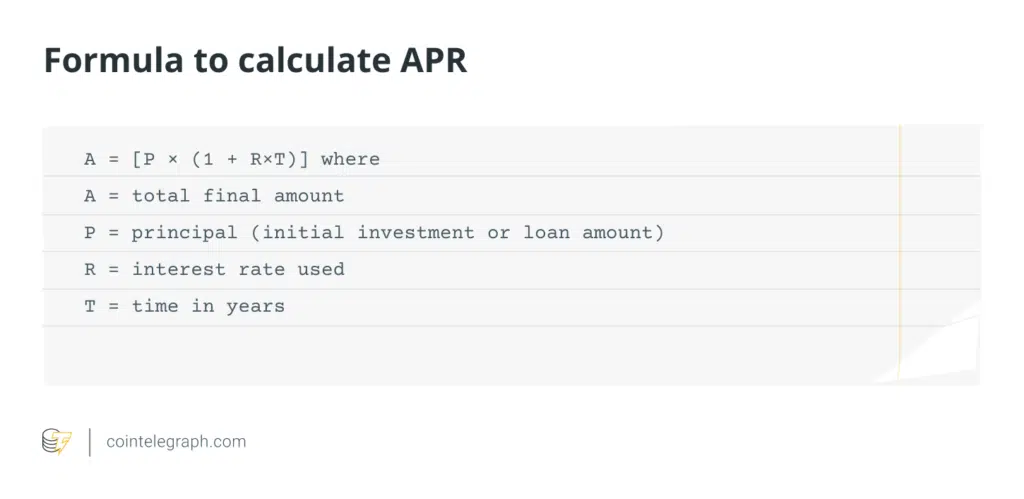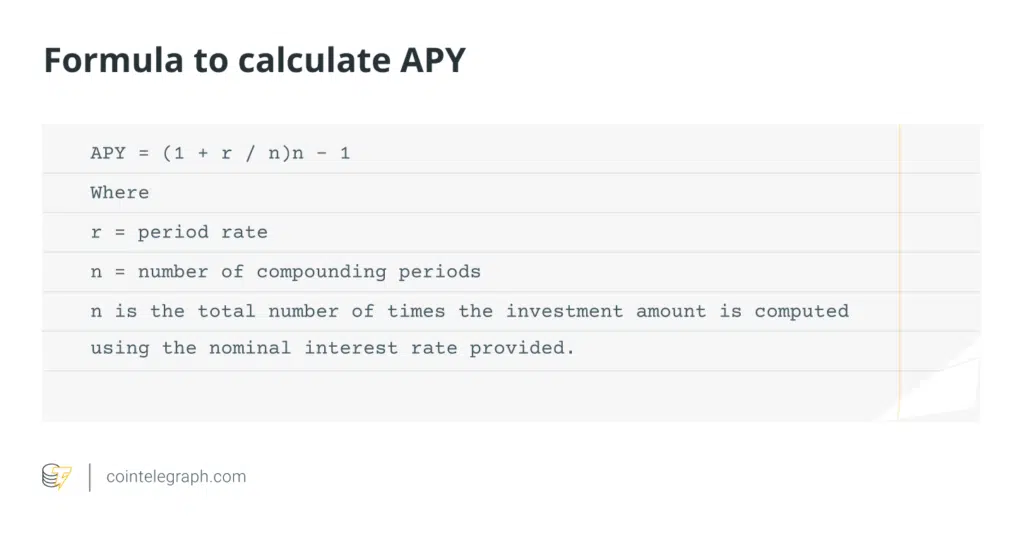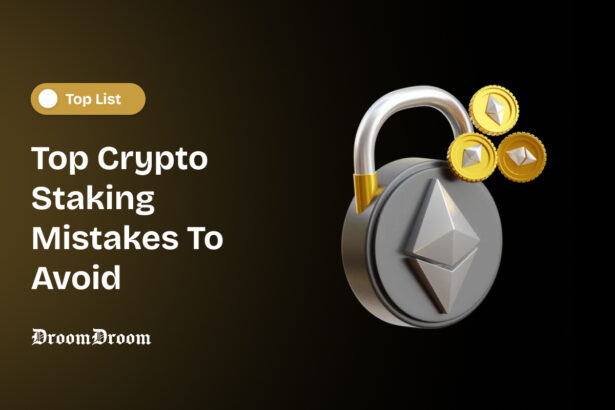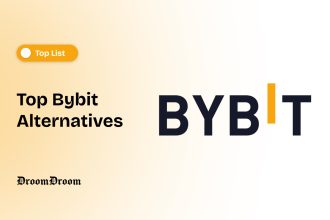Staking your cryptocurrencies is a great way to earn passive income by supporting the security and operation of a blockchain network. Notwithstanding, staking also involves some common mistakes that can reduce your earnings and expose you to serious risks. In this article, we will reveal the top 5 crypto staking mistakes that you need to avoid and how to fix them. We will also recommend some of the best platforms or services for staking crypto. Read on to learn more.
- What’s Crypto Staking?
- Top 5 Crypto Staking Mistakes to Avoid
- Falling For a High Yield Without Considering Inflation And Token Price
- Choosing The First Validator in The List Without Doing Research
- Not Knowing How to Choose a Validator Based on Performance And Reputation
- Choosing the Easiest Staking Option Without Understanding The Trade-offs
- Paying Excessive Commissions or Fees to Staking Platforms or Services
- How to Fix Your Crypto Staking Mistakes And Improve Your Returns?
- What Are Some of The Best Platforms or Services For Staking Crypto?
- Final Words
The top 5 crypto staking mistakes to avoid are falling for a high yield without considering inflation and token price, choosing the first validator in the list without doing research, not knowing how to choose a validator based on performance and reputation, choosing the easiest staking option without understanding the trade-offs, and paying excessive commissions or fees to staking platforms or services.
What’s Crypto Staking?
For starters, what is a ‘stake’? A ‘stake’, in crypto, is the number of coins that the validator has locked up to become a validator, which can indicate their commitment and their credibility. From a bird’s eye view, a high stake means that the validator has a large stake in the network, which can result in higher rewards and higher penalties for the validator. Reversing that, a low stake means that the validator has a small stake in the network, which can result in lower rewards and lower penalties for the validator.
In light of the above, crypto staking is a way of earning passive income by locking up your crypto coins in a network that supports a Proof-of-Stake (PoS) consensus mechanism, which is an alternative to Proof-of-Work (PoW) consensus mechanism, commonly used by Bitcoin. Staking is similar to putting money in a savings account, where you earn interest over time.
A consensus mechanism is a method of securing a blockchain network by having validators agree on the validity of transactions and create new blocks. Validators are rewarded with new coins and transaction fees for their service.
Comparatively, PoS is more energy-efficient, scalable, and secure than PoW, as it does not require miners to compete for computational power and electricity to validate transactions and create new blocks. Instead, stakers are randomly selected to propose and validate new blocks, based on their stake and their behavior.
P.S. Not all cryptocurrencies support staking. only those that use a PoW consensus mechanism die.
Top 5 Crypto Staking Mistakes to Avoid
Crypto staking can be a lucrative and exciting way of investing in the crypto space, but it also comes with some risks and challenges. If you are interested in staking your crypto, you should avoid these 5 common mistakes that could cost you hard-earned money or compromise the security of your digital assets.
Falling For a High Yield Without Considering Inflation And Token Price
One of the most common mistakes that crypto stakers make is to choose a cryptocurrency based on its high annual percentage rate (APR), which is the rate of return that you can earn by staking a cryptocurrency over a year, without taking into account the compounding effect of the rewards. APY (annual percentage yield), therefore, which takes into account the compound interest, is usually higher than APR, as it reflects the actual earnings that you can receive by reinvesting your coins/rewards.
That said, APRs are beneficial for borrowers in practical terms. But people who want to invest money should look at APY rates to increase their earnings.
However, a high APR or APY does not always mean a high profit, because other factors affect your actual earnings, such as inflation and token price.
Inflation which is the increase in the supply of a cryptocurrency, can reduce its value over time. It should noted that inflation is not necessarily bad for a cryptocurrency, as it can also increase the demand and the price of the coin if the coin has a strong utility, a loyal community, and a limited supply.

For example, if a cryptocurrency has a high inflation rate of 100% per year, it means that the total amount of coins in circulation will double every year. This can lower the demand and the prices of the coin, because there will be more coins available than people want to buy.
Therefore, even if you earn a high APY by staking the coin, you may end up losing money if the coin’s price drops more than the rewards you receive. This is a basic knowledge in crypto staking.
Token price, on the other hand, is the market value of a cryptocurrency, which can change depending on the supply and demand, the popularity, the innovation, the competition, and the regulation of the coin. Besides those, the market sentiment, the media coverage, the social influence, and the external events of the coin are other factors that can affect the token price.
Say, for example, a cryptocurrency has a low market cap, which is the total value of all the coins in circulation, it means that it is less popular and less stable than a coin with a high market cap. Also, the token price of Dogecoin, a meme-based cryptocurrency, has been influenced by the tweets of Elon Musk, the CEO of Tesla and SpaceX, who has expressed his support and enthusiasm for the coin. Therefore, even if you earn a high APR by staking the coin, you may end up losing money if the coin’s price crashes due to a lack of interest, a security breach, a legal issue, a negative social influence, or a better alternative.
In any case, to avoid this crypto staking mistakes, you should not only look at the APY but also the adjusted yield, which is the annualized reward rate adjusted by the inflation rate of the network supply. Adjusted yield is calculated by subtracting the inflation rate from the APY, and multiplying the result by the token price.

If a cryptocurrency has an APY of 10%, for instance, an inflation rate of 5%, and a token price of $1, the adjusted yield is (10% – 5%) x $1 = $0.05. This means that for every $1 that you stake, you will earn $0.05 in real terms, after accounting for the loss of value due to inflation.
All these will tell you how much you are earning by staking the coin. You should also consider the token price, the market cap, the volatility, the liquidity, and the potential growth of the coin. You should diversify your portfolio by staking different coins with different characteristics so that you can reduce your risk and increase your chances of profit.
Choosing The First Validator in The List Without Doing Research
Another common crypto staking mistake is to choose the first validator in the list without doing any research. A validator is a person or a company that runs a computer program that validates transactions and creates new blocks on the blockchain. By staking your coins to a validator, you are delegating your voting power and your rewards to them. However, not all validators are equal, and choosing the wrong one can cost you hard-earned money and security risks.
Some of the risks of choosing the wrong validator are:
Low Performance
If the validator has a low uptime–which is the percentage of time that they are online and available to validate transactions–you may miss out on rewards or even lose some of your stake. The uptime is not only affected by technical factors, such as the hardware, the software, the internet, and the power, but also by human factors, such as honesty, competence, and the availability of the validator.
If the validator is offline for more than 12 hours, for instance, they may be slashed, which means that they will be penalized by losing some of their stake and their rewards. if the validator is dishonest, they may intentionally go offline to avoid being slashed, or to attack the network. Or say, the validator is incompetent, they may fail to update their node or software, or to fix their bugs or errors. Any or all of these will affect you as a delegator because you will share the same fate as the validator.
High Commission
If the validator charges a high commission, which is the percentage of rewards that they keep for themselves, you may earn less than you expected. Take, for instance, the validator charges a 20% commission, which means that they will take 20% of the rewards that you earn by staking your coins to them. This will reduce your net profit and your return on investment.
P.S. In crypto staking, commission is not only determined by the validator, but also by the network, the platform, and the service.
Low Reputation
If the validator has a low reputation, which is the level of trust and respect that they have in the crypto community, you may expose yourself to fraud or malpractice. For example, if the validator is dishonest, they may steal your coins, manipulate the network, or collude with other validators to gain an unfair advantage. This will harm your security and your integrity as a staker.
The feedback and reviews of the stakers, the ratings and rankings of the platforms or services, and the endorsements and awards of the media or the industry also affect or determine reputation.
To avoid these crypto staking mistakes, you should do some research before choosing a validator. You should look at their performance, their commission, their reputation, their stake, their self-bond–the number of coins that the validator has staked from their wallet, which can indicate their confidence and their skin in the game–, their slashing history, their social media, and their website. You should compare different validators and choose the one that offers the best balance of rewards, security, and reliability. You should also diversify your stake by delegating to different validators so that you can reduce your dependence and likewise minimize the risk.
Not Knowing How to Choose a Validator Based on Performance And Reputation
A relatable mistake that crypto stakers make is not knowing how to choose a validator based on their performance and reputation. As we mentioned before, these are two important factors that affect your rewards, your security, and your reliability as a staker. Frankly, it can be hard to find and compare information about different validators, especially if you are new to crypto staking. As a result, you may end up choosing a validator based on their rank, their name, or their logo, which are not reliable indicators of their quality.
To avoid this crypto staking mistake, you should use some tools and resources that can help you find and compare validators based on their performance and reputation. Some of these tools and resources are:
Staking Platforms
Some of the best staking platforms are Coinbase, Binance, Kraken, and Crypto.com. You can check out their website for staking options.
Staking Calculators
These are tools that let you estimate your potential rewards and risks by staking your coins to validators. They usually require you to input some parameters, such as the number of coins, the APR, the commission, the inflation, the token price, and the slashing probability. They then calculate your expected returns, your break-even point, your net profit, and your risk-adjusted return. Staking Rewards, Staked, and Stake. Fish are some of the best staking calculators.
Staking Explorers
Lastly, staking explorers are tools that let you monitor and analyze the activity and the status of validators and stakers on the blockchain. They usually provide a dashboard that shows the network statistics, the validator statistics, the staker statistics, the rewards, the penalties, the events, and the trends. Examples of some of the best staking explorers include Tezos Agora, Cosmos Big Dipper, and Polkadot Subscan.
Choosing the Easiest Staking Option Without Understanding The Trade-offs
Another common mistake that crypto stakers make is to choose the easiest staking option without a good grasp of the trade-offs (that is, the individual pros and cons of the staking options).
We should immediately point out that Staking can be done in different ways, depending on the type of cryptocurrency, the type of platform, and the type of service. However, each staking option has its advantages and disadvantages, and choosing the wrong one can affect your rewards, your security, and your flexibility.
Some of the main staking options available to stakers are:
- Solo staking
- Delegated staking
- Platform staking.
Here is a sharp summary of the pros and cons of the rewards, the security, and the flexibility of each crypto staking option: Solo crypto staking may offer higher rewards, as you do not have to share them with anyone, but also lower security, as you have to protect your node and your stake from hackers and attackers, and lower flexibility, as you have to keep your node online and updated at all times.
Delegated crypto staking may offer lower rewards, as you have to share them with the validator, but also higher security, as you can rely on the validator to protect your stake and your rewards, and higher flexibility, as you can choose and change your validator at any time.
Platform crypto staking, on the other hand, may offer lower rewards, as you have to pay fees or commissions to the platform, but also higher security, as you can trust the platform to safeguard your coins and your rewards, and higher flexibility, as you can stake and unstake your coins at any time.
How do you avoid this type of mistake? You should understand the trade-offs of each staking option and choose the one that suits your goals, your preferences, and your capabilities. You should also diversify your staking options by using different platforms, different validators, and different coins so that you can optimize your rewards, your security, and your flexibility.
Paying Excessive Commissions or Fees to Staking Platforms or Services
The last common crypto staking mistake that crypto stakers make is to pay excessive commissions or fees to staking platforms or services. As we mentioned before, staking platforms and services are intermediaries that facilitate and simplify the staking process for you. However, they also charge you for their services, either by taking a percentage of your rewards, or by charging you a fixed fee per transaction, per month, or year. These commissions or fees can reduce your net profit and your return on investment, especially if they are too high or too frequent.
Some of the reasons why staking platforms and services charge commissions or fees are to cover their operational costs, such as the hardware, the software, the bandwidth, the electricity, and the maintenance of their nodes or servers. secondly, to provide additional features, such as security, insurance, customer support, the user interface, and the analytics of their platforms or services. Lastly, these platforms charge these charges to make a profit, as they are businesses that need to generate revenue and income.
Users can fix the crypto staking mistakes by comparing commissions or fees of different staking platforms and services, and choose the one that offers the best value for your money. You should also consider the quality, reliability, and reputation of the platform or service, as well as the benefits, the risks, and the trade-offs of using them. You should also be aware of the terms and conditions, the policies, and the regulations of the platform or service, as they may affect your rights and obligations as a staker.
How to Fix Your Crypto Staking Mistakes And Improve Your Returns?
If you have made any of the crypto staking mistakes that we have discussed, do not worry, because you can still fix them and improve your returns. Below, we have highlighted some steps that you can take to walk back from crypto staking mistakes and optimize your staking strategy:
- Review your staking portfolio and analyze your performance, your rewards, your risks, and your costs. Identify the areas where you can improve and the areas where you are doing well.
- Research the latest trends, the best practices, and the best opportunities in the crypto staking market. Learn from the experts, the influencers, and the community. Stay updated and informed about the developments and the changes in the crypto staking industry.
- Adjust your staking portfolio and your staking strategy according to your goals, your preferences, and your capabilities. Experiment with different staking options, different platforms, different validators, and different coins. Find the optimal balance of rewards, security, and flexibility for your staking needs.
- Monitor your staking portfolio and your staking strategy regularly and consistently. Track your progress, your results, your feedback, and your feedback. Evaluate your performance, your rewards, your risks, and your costs. Make changes and improvements as needed.
What Are Some of The Best Platforms or Services For Staking Crypto?
Many platforms and services offer crypto staking services, but some of them are better than others, depending on your staking goals, your staking preferences, and your staking capabilities. Below are 7 of the best platforms or services for staking crypto, based on their features, benefits, reputation, and reviews:
- Coinbase
- Binance.Us
- Kraken
- Crypto.com
- Gemini
- KuCoin
- Bitstamp
Final Words
Crypto staking is a great way of earning passive income by locking up some of your cryptocurrencies to support the security and operation of a blockchain network. However, crypto staking also involves some mistakes and challenges that you need to be aware of and avoid. In this article, we have explained the top 5 crypto staking mistakes to avoid and how to fix them. We have also suggested some of the best platforms or services for crypto staking. We hope that this article has helped you to improve your crypto staking knowledge and skills and to optimize your crypto staking strategy and returns. Happy staking!




















